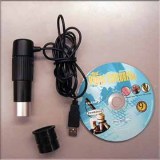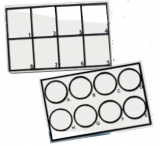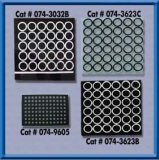Subscribe to our newsletter
Hardy Diagnostics Immersion Oils are used to assist in microscopic examination at high power by increasing the resolving power. Type A is a low-viscosity Immersion Oil. Type B is a high-viscosity Immersion Oil.Lens Cleaner is used to clean and maintain the optical glass in microscopes.
SUMMARY
Resolution of fine specimen details requires the minimum numerical aperture (NA) in the condenser-specimen-objective system be 1.00 or greater. This can be achieved by placing a liquid between the specimen coverglass and the objective. The theoretical upper limit of the numerical aperture for the immersion system is the refractive index of the liquid with which the objective is used. Water, glycerin, cedarwood oil or synthetic immersion oil and monobromonaphthalene have all been used in immersion systems with immersion oil being the most common. The recommended liquid for the immersion system will be indicated on the objective.For normal light microscopy, Immersion Oil Types A and B, with viscosities 150 and 1250cSt, respectively are recommended. The greater the gap between the coverglass and the lens of the slide and the condenser, the more desirable high-viscosity becomes. High-viscosity oil is also recommended for inverted or slanted microscope stages. Low-viscosity oil is recommended for systems with a very short immersion system distance or in colder environments.
FORMULA
Immersion Oil Type A and B, are formulated from stable, chemically inert, non-drying, non-hardening, synthetic hydrocarbons and natural petroleum derivatives. The refractive indexes of these oils are 1.515 +/- 0.0002 at 23 degrees C. They are easily removable and may be mixed for intermediate viscosities.Lens Cleaner contains ethylene glycol, ammonium hydroxide, isopropyl alcohol, and deionized water.
PROCEDURE
Find a suitable field on the slide with a low-power, dry objective. Focus the substage condenser. Switch to the high-dry objective. Move the immersion lens into position. Place a small drop of oil on the front of the objective and another small drop on the area of interest. This technique will prevent the formation of air bubbles. Bring the objective lens and specimen slowly together until the lens contacts the oil on the slide. Always observe oil contact on the stage level. Use fine focus for the final focus of the specimen.Use lens paper and lens cleaner to remove immersion oil when microscopic observation is finished. Do not allow immersion oil to accumulate on objectives.
Cat No. HDZ95 Immersion Oil, Type A 20mL
Cat No. HDZ85 Immersion Oil, Type A 125mL
Cat No. HDZ96 Immersion Oil, Type B 20mL
Cat No. HDZ86 Immersion Oil, Type B 125mL
Cat No. HDZ97 Lens Cleaner 15mL







 Microscope Video EyePiece
Microscope Video EyePiece Agglutination Slides
Agglutination Slides Agglutination Plates
Agglutination Plates